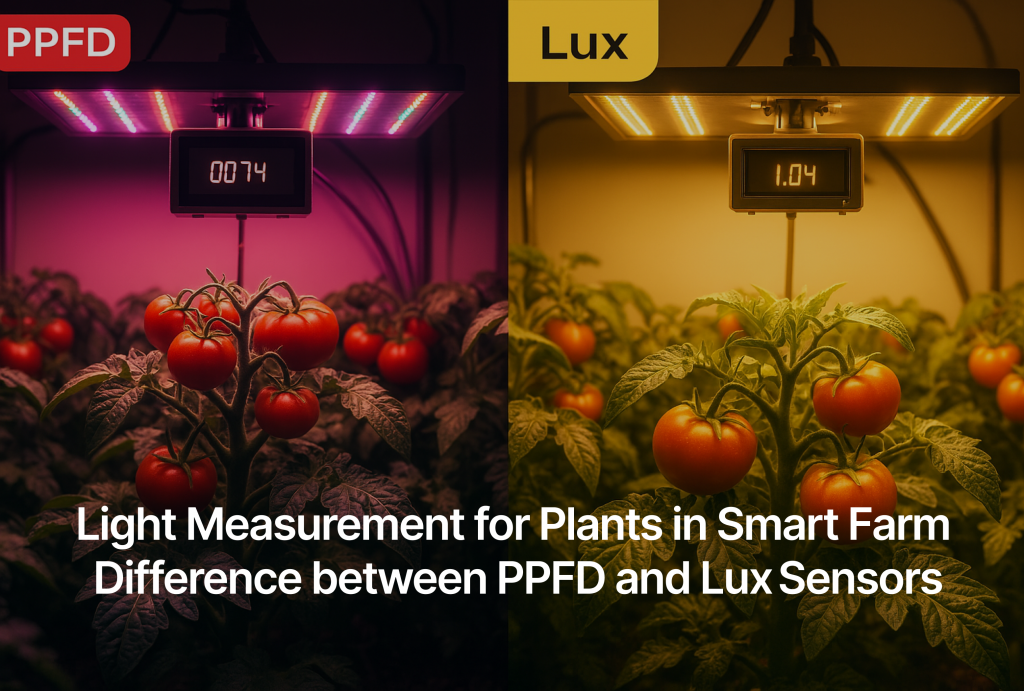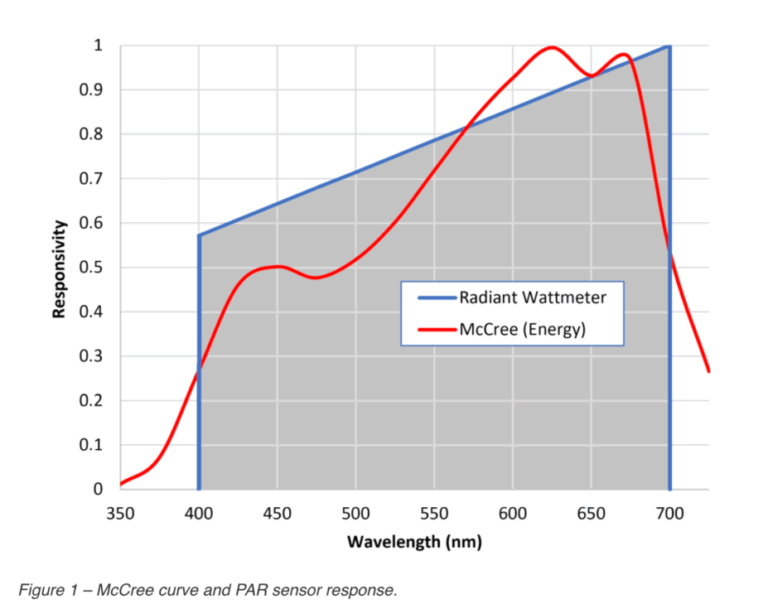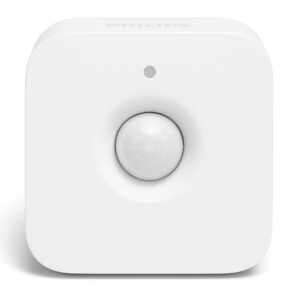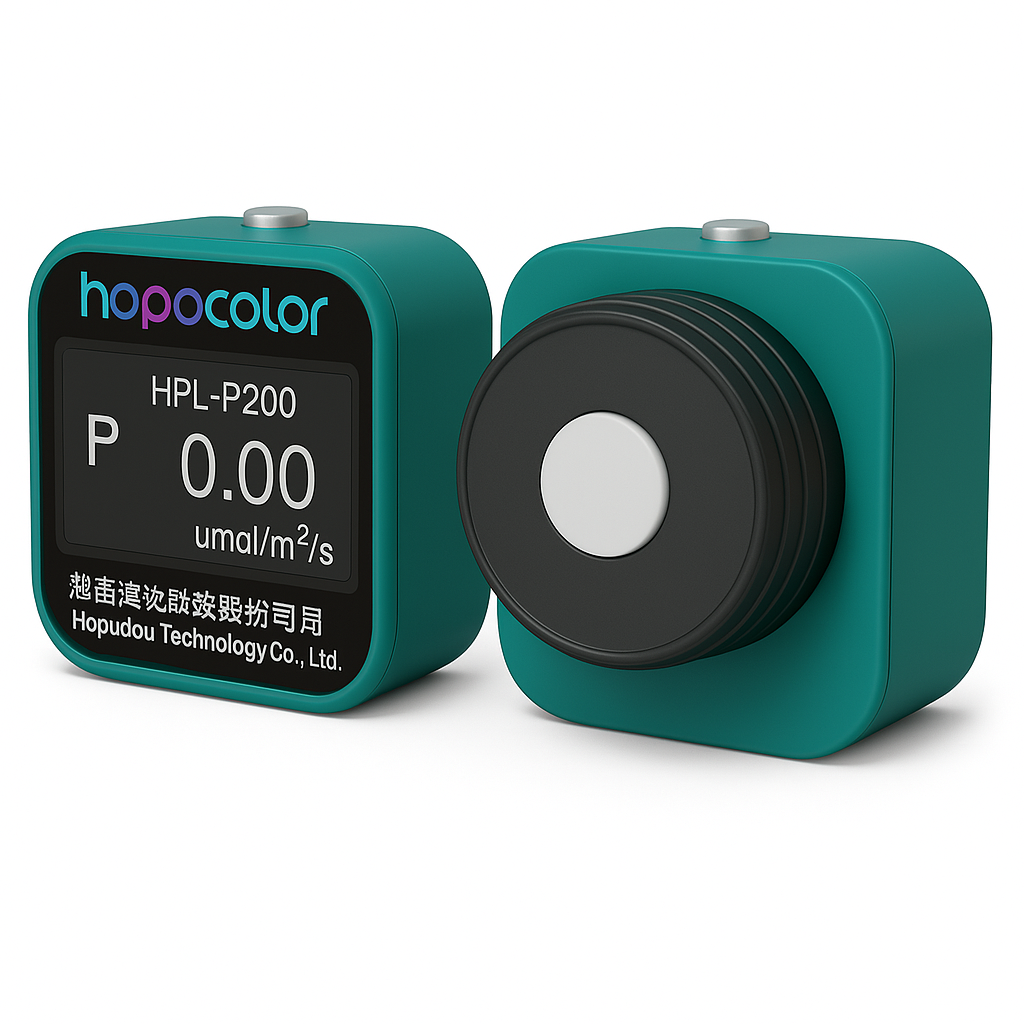
In modern smart farming, technology plays role in optimizing growth conditions and improving crop yields. Among the essential tools is the light sensor, but not all light sensors are equally effective for supporting plant growth.
This article explores the key differences between PPFD (Photosynthetic Photon Flux Density) sensors and Lux sensors, and how using the correct sensor can directly impact plant health and productivity.

References: What are PAR, PPF and PPFD, and why should you care? – Light Science Technologies
Plants vs. Humans: How We See Light Differently
The fundamental difference between PPFD and Lux sensors lies in what they are designed to measure:
Lux Sensor: Measures light intensity in units of lux, based on the sensitivity of the human eye. Our eyes are most responsive to green-yellow light, which is why lux measurements are ideal for general lighting in homes and offices, but not necessarily for plants.


PPFD (PAR) Sensor: Designed for Direct Measurement of Light in Plant Science
The PPFD (Photosynthetic Photon Flux Density) sensor is specifically designed to measure light in terms of its usefulness to plant growth. It quantifies the number of photons that plants can absorb and use in the process of photosynthesis.
- PAR (Photosynthetically Active Radiation): This refers to the spectrum of light wavelengths that plants use for photosynthesis, covering the range from 400 to 700 nanometers (nm).
- PPFD (Photosynthetic Photon Flux Density): This is the unit used to measure PAR, indicating the “density of photons incident on a surface per unit of time.” It is expressed in
- μmol/m²·s (micromoles per square meter per second). This value represents the “light energy” available to plants for growth and development.
References: PPFD Meter Par Meter HPL220P LED Grow Lights Tester PAR PPFD Meter Sensor Spectrometer – LaserSE
Why Lux Isn’t Enough for Plants
Lux sensors often fall short when it comes to plant applications. Here’s why:
- Plants rely heavily on red and blue light for photosynthesis, but Lux sensors are not sensitive to these wavelengths.
- As a result, lighting systems designed for plant growth (such as LED grow lights that emphasize red and blue) may show low lux values but actually deliver high PPFD, which benefits plant growth.
- On the flip side, lights with strong green content might show high lux but have low photosynthetic value.
So, relying solely on lux can give you a misleading picture of how much usable light your plants are receiving.
PPFD: The Standard for Smart Farming
In controlled environments like greenhouses and indoor farms, PPFD has become the standard for light measurement. Here’s why:
- Custom light recipes: PPFD allows farmers to adjust light intensity precisely for different plant species and growth stages.
- Energy efficiency: Deliver only the light that plants need, minimizing waste.
- Quality control: Accurate light control influences not just yield, but also the nutritional quality of crops.
Real-World Case Study: Cherry Tomatoes in Thailand
A joint research project by Chiang Mai University and Khon Kaen University demonstrated the power of PPFD-based lighting strategies.
- In an open field (E1) with the highest PPFD level (1,662.4 μmol/m²/s), cherry tomatoes grew larger and heavier.
- Meanwhile, in a plant factory (E3) using controlled LED light with a PPFD of 323.1 μmol/m²/s, some tomato varieties accumulated higher levels of lycopene and beta-carotene, which are important antioxidants.
This shows that optimal PPFD not only affects size and yield but also improves nutritional quality, aligning perfectly with the goals of modern agriculture.
Conclusion
While Lux sensors are useful for measuring light in human spaces, PPFD sensors are essential for smart farming. If your goal is to maximize plant health, yield, and quality, investing in the right light measurement tool can make all the difference.
References:
